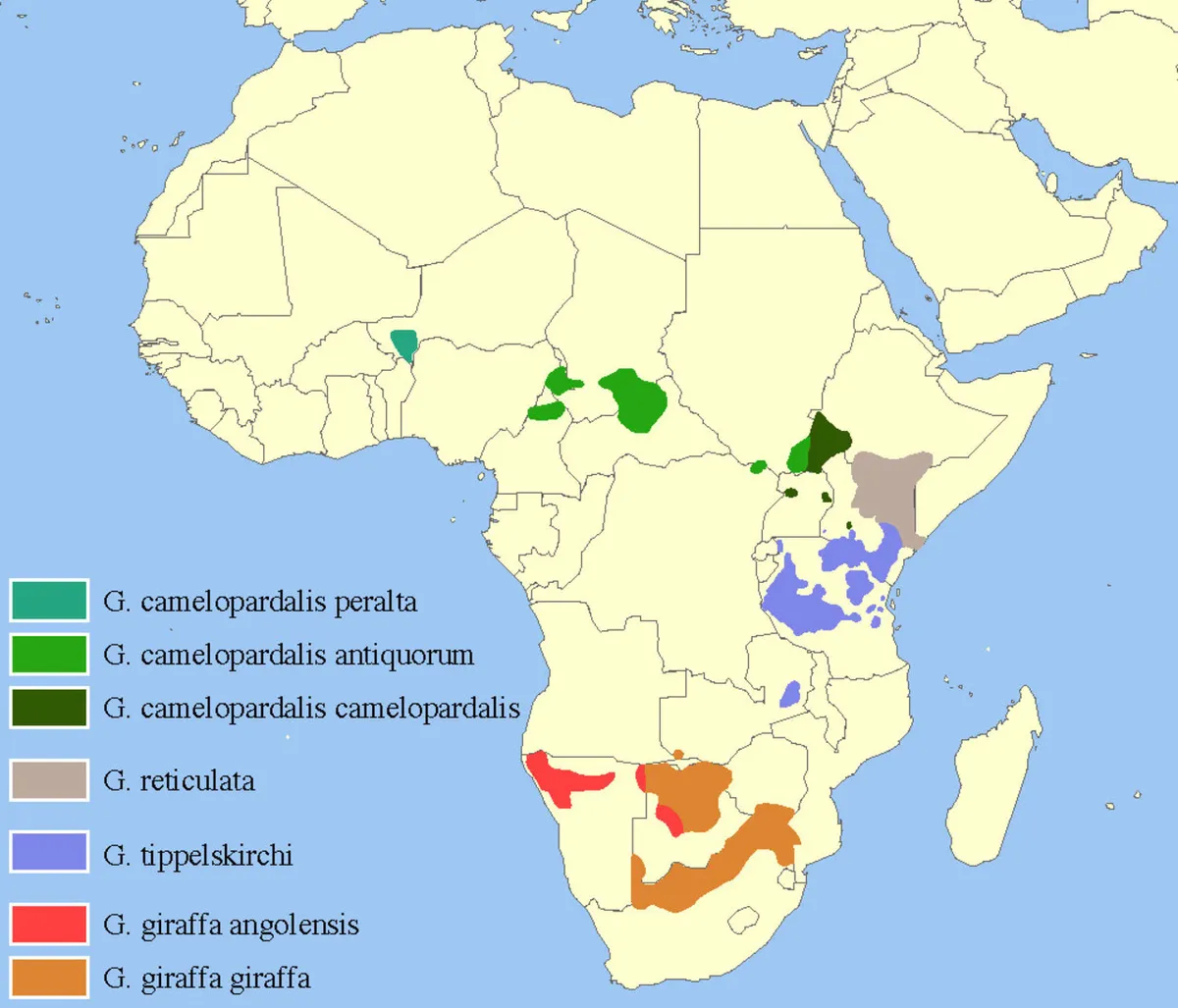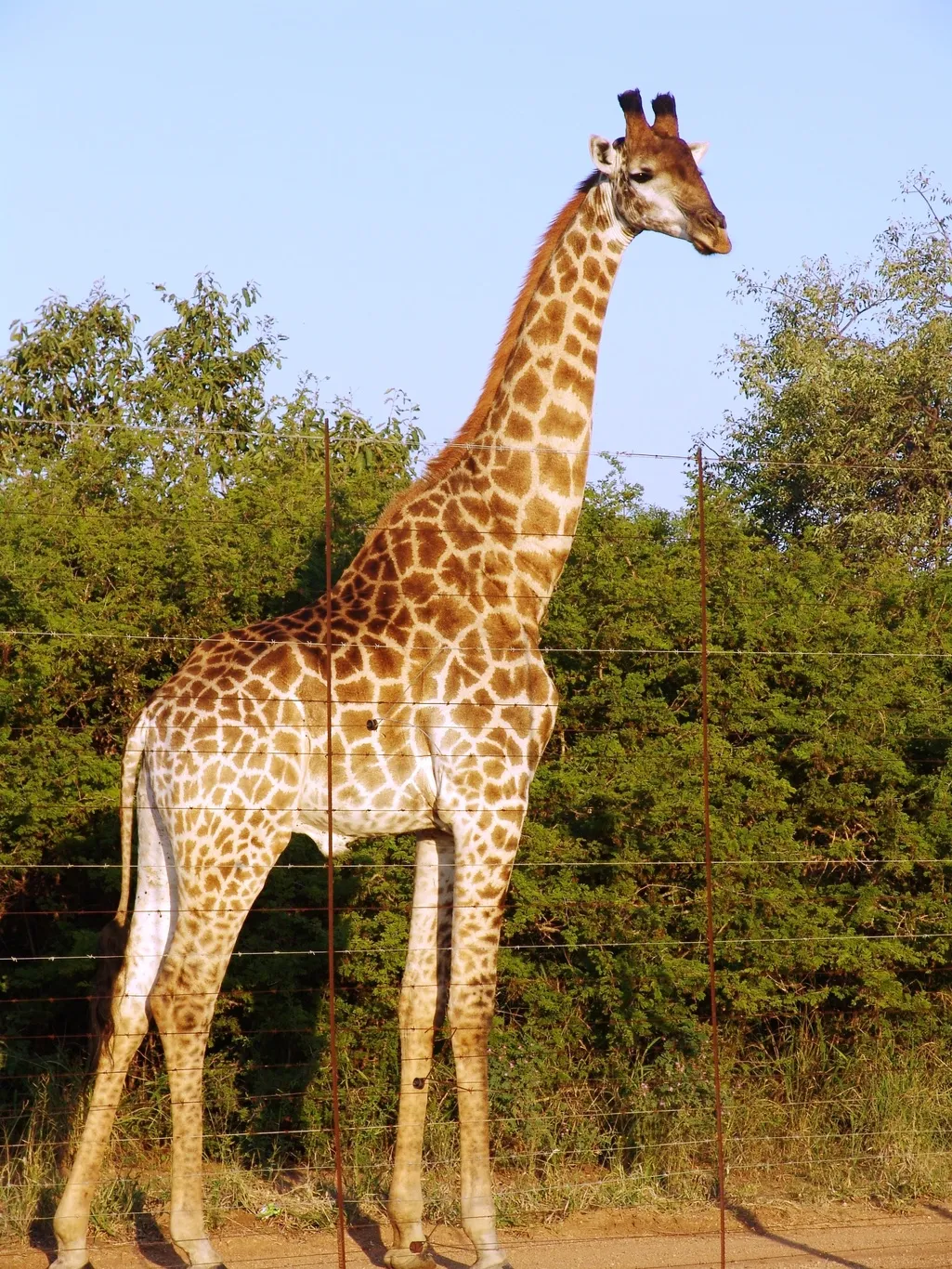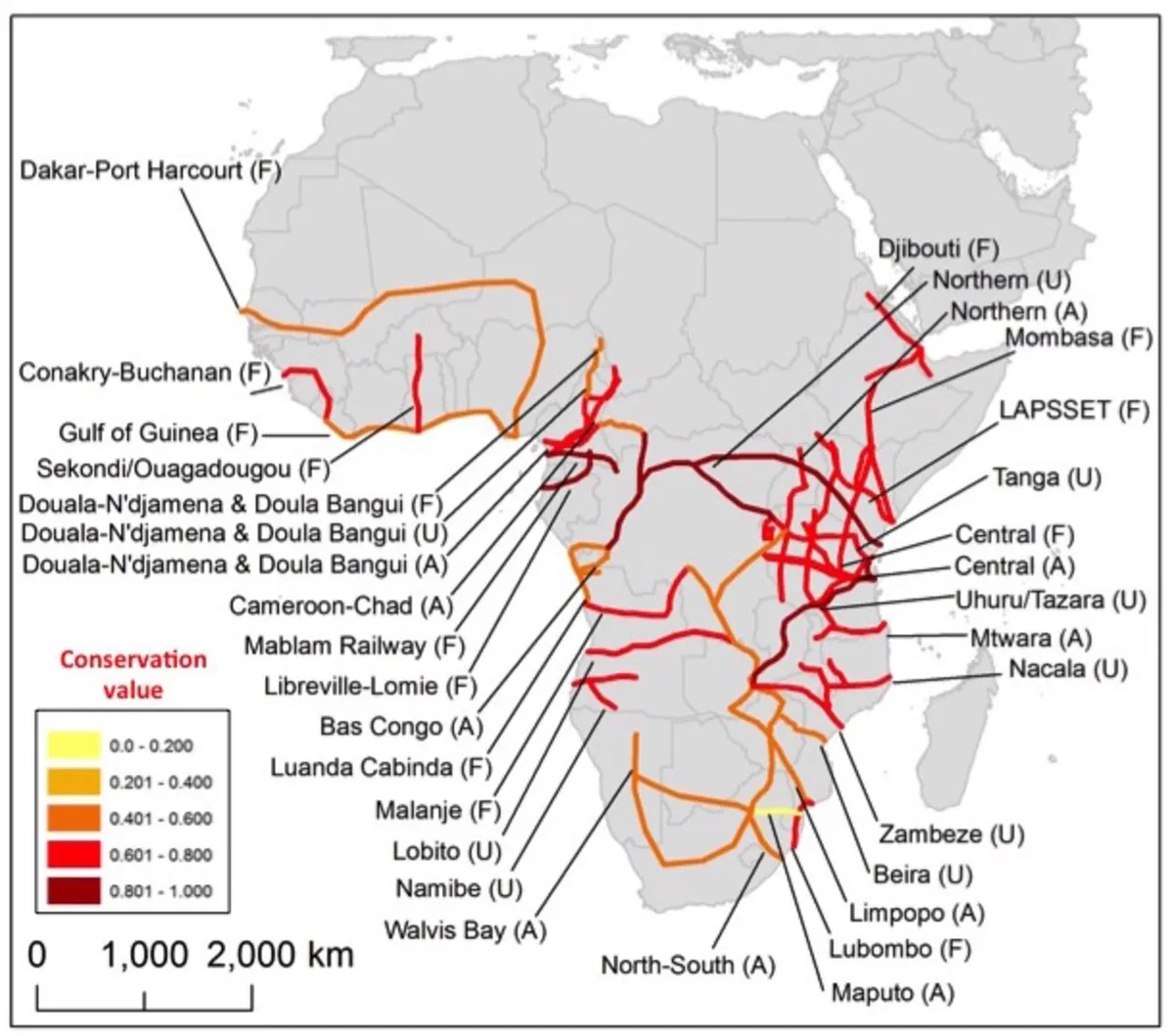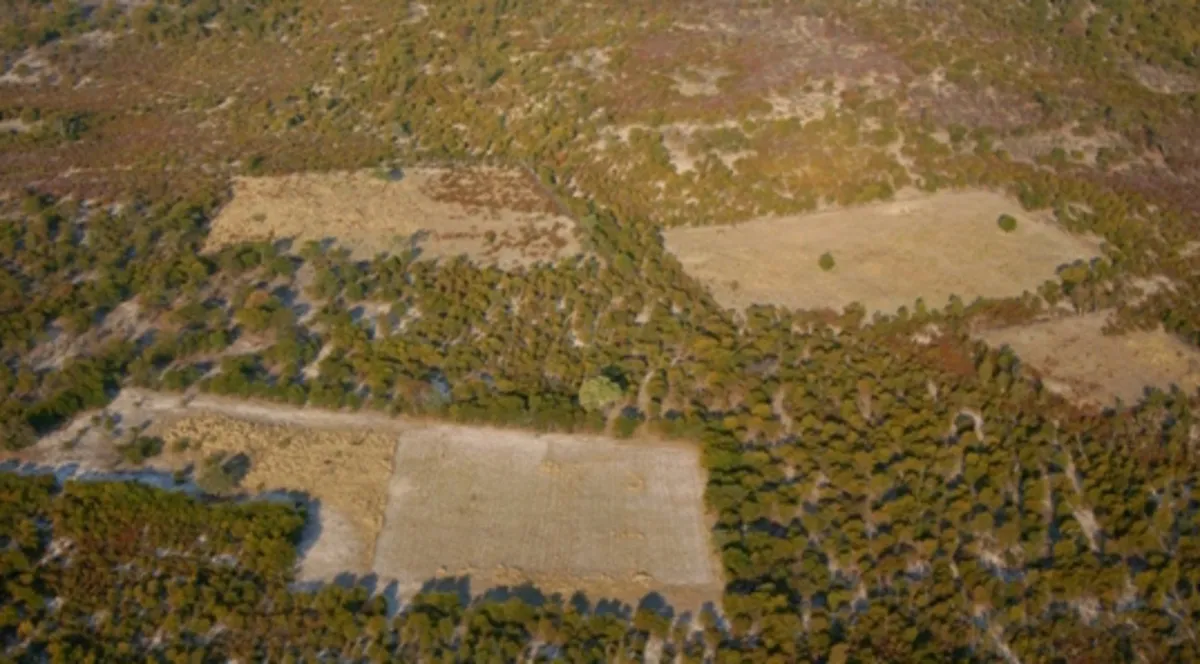Pardon the pun, but it’s time to stick our necks out for giraffes. We have mistakenly taken the world’s tallest mammal for granted, fretting far more about other beloved animals such as rhinos, elephants and great apes.
But now it seems that all is not well in giraffe-land, with reports emerging that they may be staring extinction in the face.
Why? For starters, thanks to modern molecular genetics, we have just realised that what we thought was one species of giraffe is in fact four, split into between seven and nine distinct subspecies. That’s a lot more biodiversity to worry about.

The current distribution of recognised giraffe species and subspecies. Narayanese at English Wikipedia
Even more disturbing is the fact that giraffe populations are collapsing. Where once they roamed widely across Africa’s savannas and woodlands, they now occupy less than half of the real estate they did a century ago.
Where they still persist, giraffe populations are increasingly sparse and fragmented. Their total numbers have fallen by 40% in just the past two decades, and they have disappeared entirely from seven African countries.
Among the most imperilled is the West African giraffe, a subspecies now found only in Niger. It dwindled to just 50 individuals in the 1990s, and was only saved by desperate last-ditch efforts from conservationists and the Niger government.
As a result of these sharp declines, the International Union for the Conservation of Nature recently changed giraffes’ overall conservation status from “Least Concern” to “Vulnerable”. In biological terms, that’s like a ship’s pilot suddenly bellowing “iceberg dead ahead!”
Tall order
Why are giraffes declining so abruptly? One reason is that they reproduce slowly, as might be expected of a big animal that formerly had to contend only with occasional attacks by lions, hyenas and tribal hunters, and as a result is not well adapted to our hostile modern world.
Giraffes today are being hit by much more than traditional enemies. According to the United Nations, Africa’s population of 1.1 billion people is growing so fast that it could quadruple this century. These extra people are using lots more land for farming, livestock and burgeoning cities.

Beyond this, Africa has become a feeding ground for foreign corporations, especially big mining firms from China, Australia and elsewhere. To export bulk commodities such as iron, copper and aluminium ore, China in particular has gone on a frenzy of road, railway and port building.
Fuelled by a flood of foreign currency, Africa’s infrastructure is booming. A total of 33 “development corridors” – centred around ambitious highway and rail networks – have been proposed or are under active construction. Our research shows that these projects would total more than 53,000km in length, criss-crossing the continent and opening up vast expanses of remote, biologically rich ecosystems to new development pressures.

Meanwhile, giraffes are struggling to cope with poachers armed with powerful automatic rifles rather than customary weapons such as spears. As shown in this poignant video, giraffes are commonly killed merely for their tails, which are valued as a status symbol and dowry gift by some African cultures.
Time to act
For a group of species about which we had been largely complacent, the sudden shift to “Vulnerable” status for giraffes is a red flag telling us it’s time for action.
Giraffes’ sweeping decline reflects a much wider trend in wildlife populations. A recent WWF report forecasts that we are on track to lose two-thirds of all individual birds, mammals, reptiles, amphibians and fish on Earth by 2020. Species in tropical nations are doing especially poorly.
What can we do? A critical first step is to help African nations develop their natural resources and economies in ways that don’t decimate nature. This is an urgent challenge that hinges on improving land-use planning, governance and protection of nature reserves and imperilled wildlife.

We can also use emerging technologies to help us. For example, it is now possible to monitor illegal deforestation, road-building and other illicit activities virtually in real time, thanks to remarkable advances in satellites, drones, computing and crowdsourcing.
What’s more, affordable automatic cameras are being widely used to monitor the status of wildlife populations. These are particularly useful for giraffes, which have individual mottling patterns as distinctive as human fingerprints.
But all the technology in the world won’t save wildlife if we don’t address the fundamental drivers of Africa’s plight: its booming population and desperate needs for equitable social and sustainable development.

Ignoring these basic needs while tackling poaching and illegal road-building is akin to plugging the holes in a dam while ignoring the rising flood-waters that threaten to spill over its top.
We have to redouble our efforts, pushing for conservation and more sustainable societies all at once – plugging the holes while at the same time building the dam higher.
For the stately giraffe and the rest of Africa’s declining wildlife, it’s time for us to stand tall – or else wave goodbye.
Bill Laurance, Distinguished Research Professor and Australian Laureate, James Cook University.
This article was originally published on The Conversation. Read the original article.